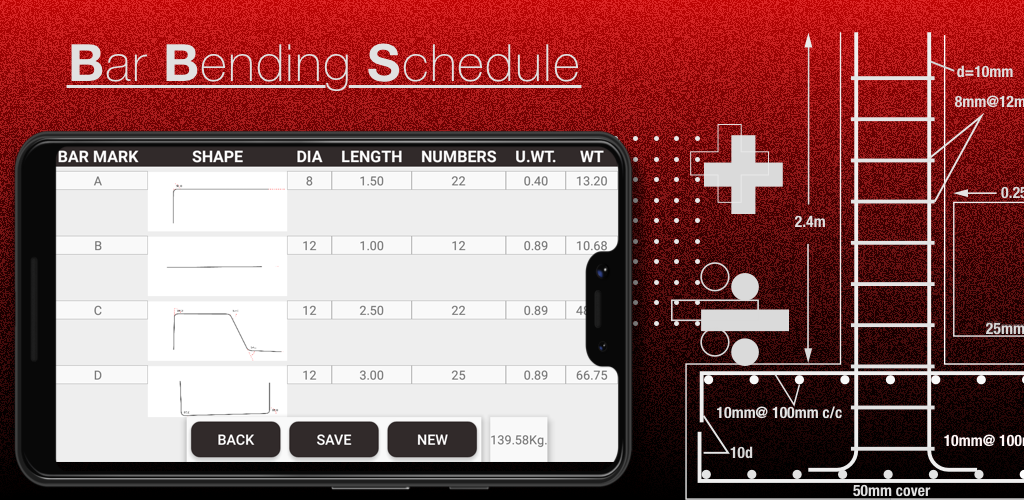Bend Deduction in BBS
Let’s first see what bend deduction is and how to apply it.
When you bend rebar it stretches.
When you stretch a 100g loaf of bread, it still weighs 100g, stretching it will increase its length but not weight.
So instead of directly multiplying the Unit weight with the length, we must first decrease the length by the amount it was stretched.
A bar stretches “d units” for every 45-degree bend where d is the diameter of the rebar
This means
D for 45
2D for 90
3D for 135
And
4D for 180
So we count the number and angle of bends and subtract the length of the stretched bar with these values to get the actual length before multiplying it with the Unit Weight.
If you want a free software to make bar bending schedule I highly recommend you download the official BBS app
BBS App Android Google Play Link: Click here to download
iPhone AppStore Line: Click here to download

If you are a fresher civil engineer and want to know how to get a job read this article: How to get a job as a fresher civil engineer.
When making a bar bending schedule, a deduction of 1 bar diameter is typically taken for 45-degree bends. This deduction is taken to account for the length of the bend and to ensure that the overall length of the rebar is maintained.
For example, if the diameter of the rebar is 12 mm, then the deduction for a 45-degree bend would be 12 mm (1 x 12 mm). This means that the length of the rebar needed for the bend would be 12 mm shorter than the length required for a straight section of the same rebar.
It is important to note that the deduction amount may vary depending on the specifications and requirements of the project. Therefore, it is recommended to consult with the project engineer or relevant authority for specific deduction values.
Why is Deduction Important in Bar Bending Schedule?
Deduction is an essential aspect of Bar Bending Schedule as it helps in the accurate calculation of the quantity of steel required for the construction project. The accurate calculation of the quantity of steel required is crucial as it can significantly impact the cost and timeline of the construction project. Incorrect calculations can lead to either the wastage of steel or a shortage of steel, both of which can have adverse effects on the overall construction project.
The deduction also ensures that the overlapping of the steel bars is done correctly, which is critical to the structural integrity of the construction project. The overlapping of the steel bars provides the necessary strength and stability to the structure, and any error in the calculation can lead to a weak and unstable structure.